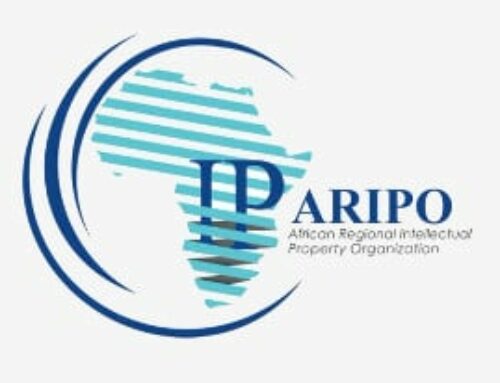CONVEYANCING
Conveyancing describes the legal procedure whereby the ownership of immovable property is transferred. Property ownership in Zimbabwe is recorded in the Registrar of Deeds’ Office which deals with conventional and sectional title property ownership. Conveyancing is a complex process involving many role-players, all managed by the Conveyancer who is a legal practitioner. The transferor nominates the Conveyancer, whose primary duty is to protect the interests of the transferor.
PROPERTY TRANSFER
A typical residential property transfer commences once the Conveyancer receives the executed Agreement of Sale setting out the rights and obligations of the Seller and the Purchaser. The sale of immovable property must be recorded in writing.
The course of action taken by a Conveyancer in transferring property is determined by the specifics of the case and the details of these vary considerably. Therefore, the information we have set out below is by way of guidance. It should not be relied upon as generic advice. Specific advice should be sought in all cases.
THE CURRENT TITLE DEED
Prior to the Agreement of Sale being executed, a deed search should be conducted to confirm the current ownership of the property, the property description, any mortgages, caveats, servitudes, or other restrictions against alienation. If this is not done before the Agreement of Sale is signed, it will be carried out by the Conveyancer before transfer.
WHERE THERE IS A MORTGAGE BOND REGISTERED AGAINST THE TITLE DEED
If a mortgage bond is registered against a title deed, all the condition(s) on the mortgage bond must be met and the mortgage bond over the property must be cancelled before transfer. If the mortgage has been registered by a bank, the bank will write to the Conveyancer requesting that s/he confirms the details of the transfer. The bank will also confirm to the Conveyancer the amount required to settle the mortgage on the date of transfer. The bond cancellation attorneys will thereafter receive instructions from the bank to attend to the cancellation process. If there is no amount outstanding on the bond, the bank will confirm this and sign a ”Consent to Cancellation of the Bond”.
WHERE A TITLE DEED HAS BEEN LOST
If the original title deed has been lost, an application will have to be made for a duplicate original title deed. Where a diagram deed is lost, a survey diagram will have to be framed by the Surveyor General’s department before replacement. In addition, an application for a lost title deed requires publication in a newspaper and the Government Gazette which process will delay the transfer. This application attracts additional costs which are governed by the Law Society of Zimbabwe (Conveyancing Fees) By-laws, 2013.
DOCUMENTS FOR SIGNATURE
Preliminary documents will be prepared for signature by the parties. These include:-
- A Power of Attorney – the Seller (or his/her agent appointed through a Special Power of Attorney) authorises the Conveyancer formally in this document to appear before the Registrar of Deeds to register the transfer in the Deeds Office. How about resolutions for corporates?
- Declarations – In terms of the Stamp Duties (Declarations for Acquisition or Disposal of Property) Regulations, 1999 the Seller and Purchaser (or their agents) will be required to sign separate Declarations confirming the purchase price, the property sold and the extent of improvements thereon.
CAPITAL GAINS TAX
Where the property being sold was acquired after the 1st of February 2009, capital gains tax is payable at 20% of the capital gain. For properties which were acquired before the 1st of February 2009 and sold after this date, the capital gains tax is charged at 5% of the gross capital amount realised from the sale. Capital gains tax is charged and calculated as per the provisions of Section 6 & 7 of the Capital Gains Tax Act [Chapter 23:01], as read with Sections 37 to 39 of the Finance Act [Chapter 23:04]. A seller may be exempted from capital gains tax in certain specified instances. Our lawyers can advise further on this. The common exemptions are set out below.
- Where the property is the primary residence and the seller is over the age 55.
- A sale by Executor out of a deceased estate.
- Transfers of any specified assets between spouses.
- Transfer of principal private residence between former spouses following a divorce order.
- The sale of a principal private residence where the sale proceeds are used to acquire/construct a new principal private residence.
- Transfer of business property used for the purposes of trade by an individual to a company under his/her control where such company will continue to use the property for the purposes of trade.
- Donation of housing units to a local authority, approved employee share ownership trust or community share ownership trust or scheme.
For a full list of all the exemptions see Section 10 of the Capital Gains Tax Act [Chapter 23:01]).
TRANSFER FEES
The Conveyancer will issue a pro-forma invoice in respect of transfer fees which include transfer duty, the conveyancing fee together with VAT thereon, disbursements, Deeds Office fees, postages and other sundries. The invoice will not include any bond or bank fees which a party must pay to the bank. The transfer fees are calculated on a sliding scale as prescribed in the Law Society of Zimbabwe (Conveyancing Fees) By-laws, 2013. Transfer fees are required to be paid before any work is done and the amount will be held in trust pending transfer save for the amounts necessary to pay for Stamp Duty and registration costs.
DRAFTING THE TITLE DEED
The next stage of the conveyancing process involves following up the bond cancellation process (if required), obtaining the original title teed and drafting a new title deed. The Purchaser and Seller’s identity documents will be required. In drafting the new title deed, the Conveyancer will refer to the original title deed (Seller’s copy), the Agreement of Sale and documentation evidencing proof of payment of purchase price. It is also critical for the Conveyancer to receive the parties’ clear and correct instructions at this stage to ensure the drafting is accurate.
ZIMRA INTERVIEW
The Seller and Purchaser (or their authorised representatives by virtue of Power of Attorney or Resolution in the case of a company) will be required to attend an interview by ZIMRA, which they will attend together with one of our members of staff. The parties will be required to produce their identity documents to confirm their identity, the original Agreement of Sale and proof of purchase price (or at the very least, payment of a deposit). Following the interview, ZIMRA will calculate the Capital Gains Tax payable. An official receipt will be issued once payment has been made together with a Capital Gains Tax Clearance Certificate or applicable exemption.
There are different considerations depending on whether the applicant is a limited company or an individual, therefore our members of staff will assist in the filling in of the ZIMRA forms (CGT1 and REV1) and ensuring that the supporting documents and information is ordered in the manner required by ZIMRA for assessment in each particular case.
RATES CLEARANCE
No property can be transferred until the current rates arrears account, together with a three-month pre-payment for rates, water and services, have been paid. It is ordinarily the duty of the seller to pay for rates clearance and obtain a Rates Clearance Certificate which is a requirement for lodgement in the Deeds Office. It is possible to set out in the Agreement of Sale that the Purchaser must reimburse the Seller who pre-pays the rates clearance amounts. Levy clearance or homeowners’ association clearance may be required in the event of the sale of a flat.
LODGING DOCUMENTS WITH THE DEEDS REGISTRY
Once all the documents have been prepared and the clearance certificates are at hand, transfer will be lodged at the Deeds Office. The Deeds Office has the right to reject any documentation, and raise queries which would require the documents to be re-lodged. Once the Registrar is satisfied, transfer will be registered. Transfer of ownership passes from the Seller to the Purchaser once a new title deed is formally executed by the Registrar of Deeds. If a mortgage has been obtained by the Purchaser, the mortgage bond is simultaneously registered against the new title deed.
Once the title is registered in the Deeds Office, the Seller will receive the net purchase price. This marks the end of the conveyancing transaction.
If the property is in a new development, the title deed will first be sent to the Surveyor General for the process of “deduction”, which confirms the demarcation of the newly registered land’s boundaries from the parent deed’s land. This can take a few months. The Deeds Office will deliver the registered title deed (and mortgage bond if applicable) to the law firm. Where there is a bond on the property, the title deed is sent to the bond holder which is usually a bank or financial institution.
RECEIPT OF TITLE DEED AND SAFE KEEPING
The Purchaser will be asked to sign an acknowledgement of receipt upon receipt of the title deed. The documents must be kept safely and securely by the owner, and cannot be laminated or otherwise defaced as this will invalidate them. If lost or defaced, the owner will have to apply for a lost title deed which will result in additional costs.
By
| Nana Manu-Mabiza Associate Conveyancing Department |
& | Benedict Vambe Conveyancing Paralegal Conveyancing Department |
All rights reserved


